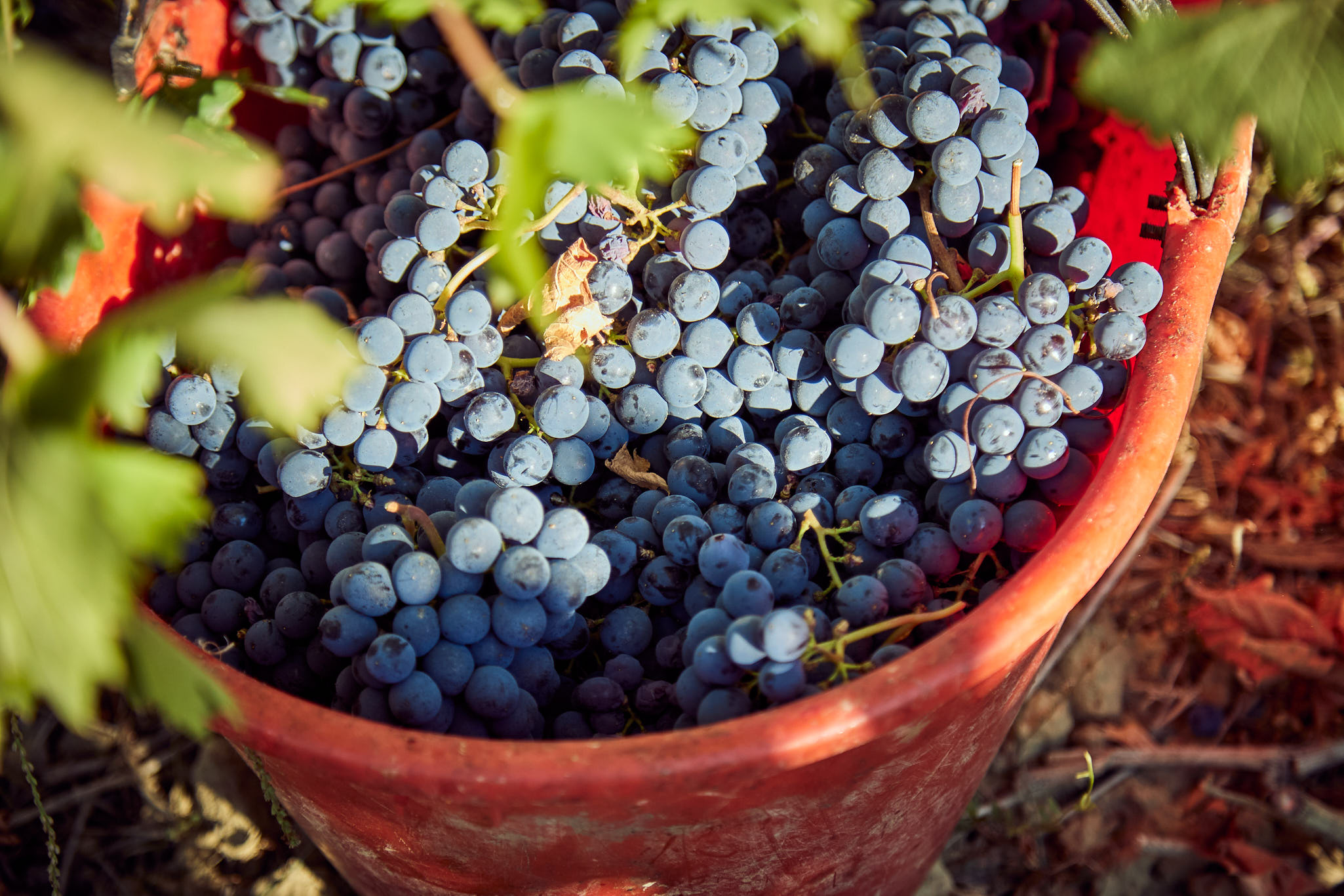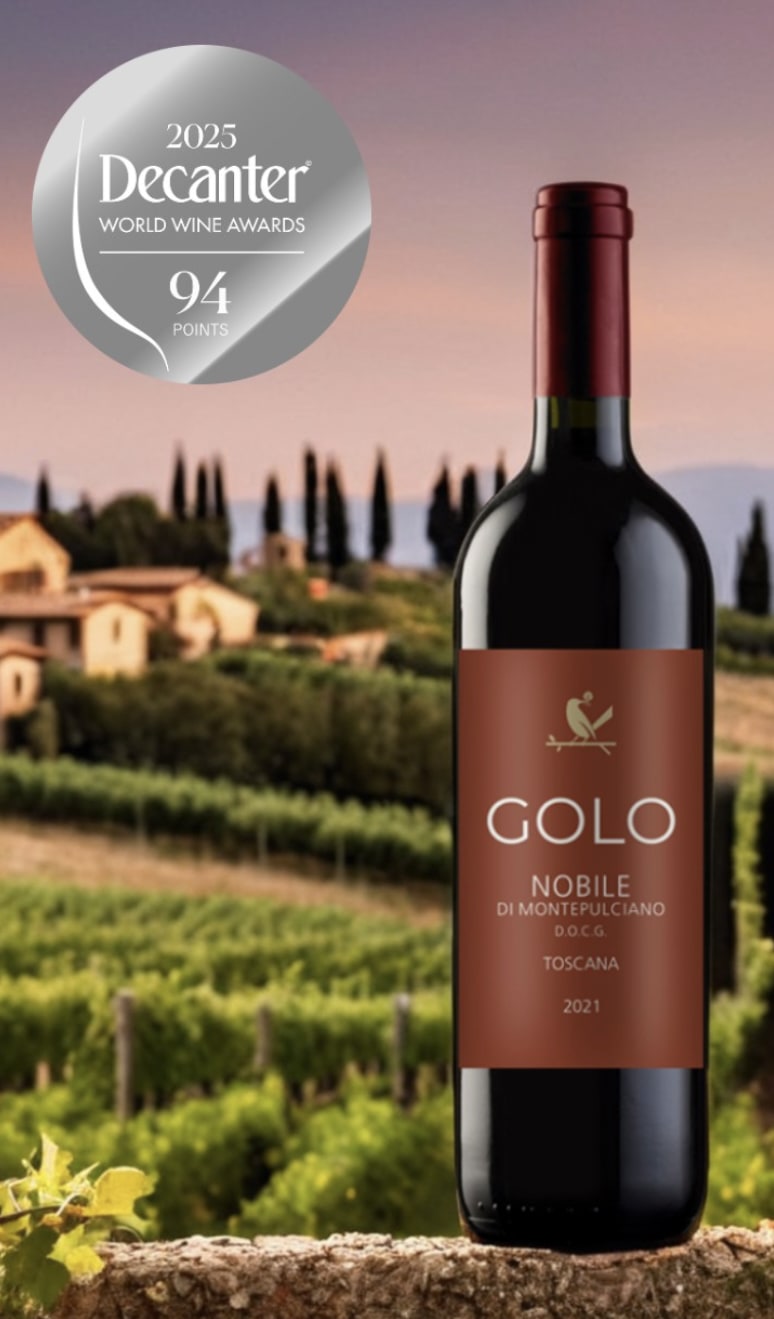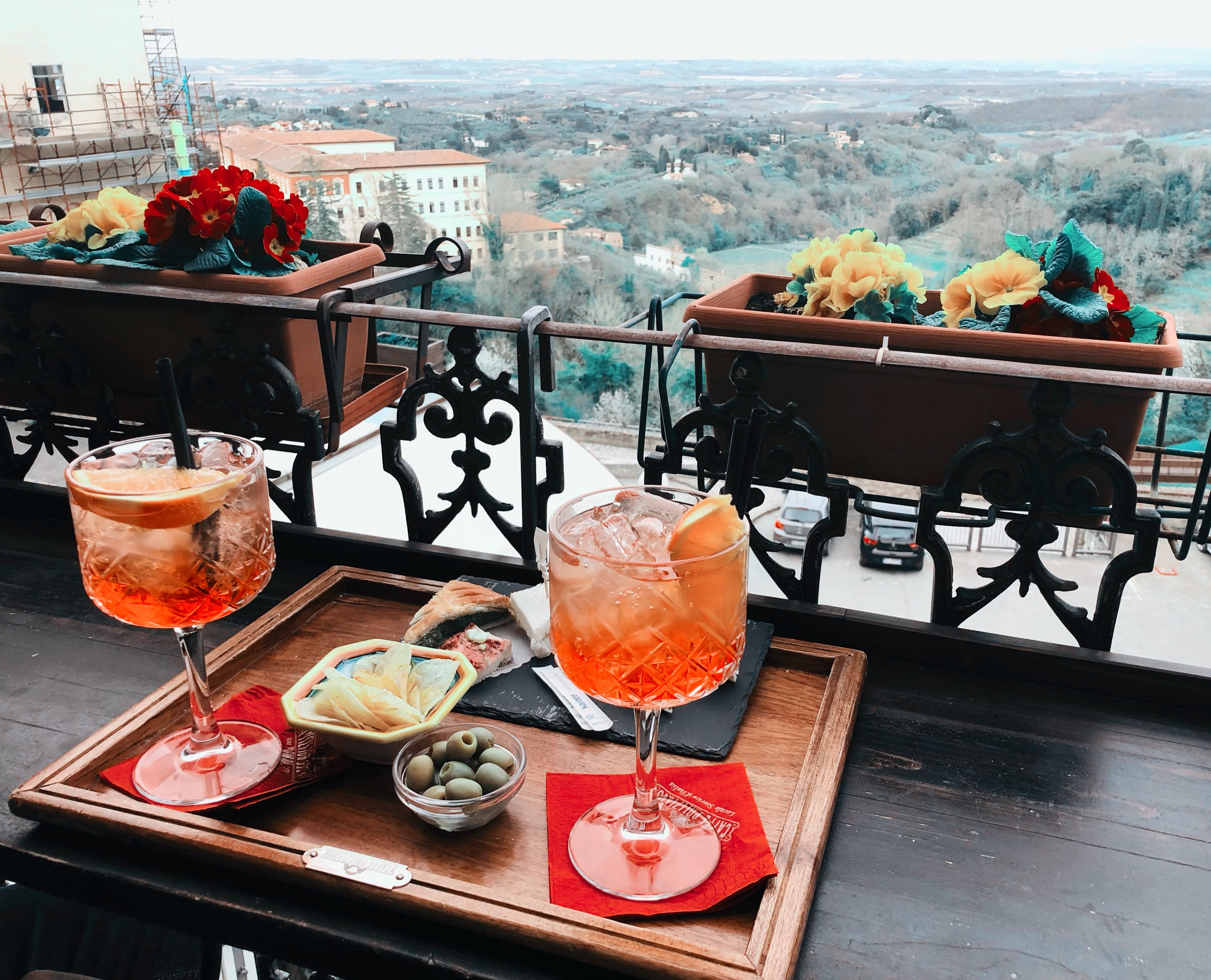Wine Masterclass Versus Tasting: Classic Styles Compared 2025
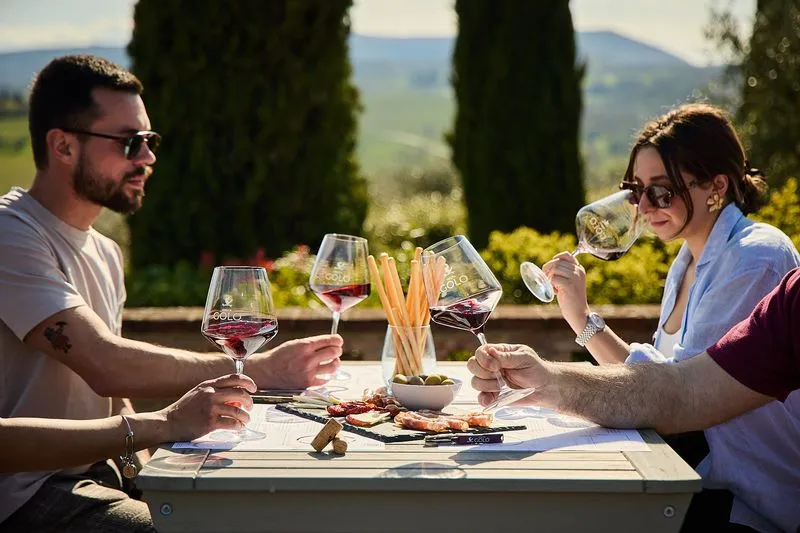
Are you eager to deepen your appreciation for wine in 2025? The world of wine offers countless opportunities to explore, especially when it comes to understanding classic styles.
Choosing between a wine masterclass and a tasting event can shape your journey, whether you seek structured learning or sensory discovery. In this article, we will define each experience, examine their unique formats, compare their benefits, and spotlight classic wine styles.
Ready to make an informed choice? Read on to discover which path best suits your passion for wine.
Understanding Wine Masterclasses
Wine masterclasses have become a cornerstone for anyone serious about deepening their wine knowledge. If you are curious about structured learning and want to explore classic wine styles in detail, a wine masterclass may be the perfect fit. These experiences blend expert instruction with hands-on tasting, making them popular among both enthusiasts and professionals.

What Is a Wine Masterclass?
A wine masterclass is an immersive, education-focused session led by a wine expert, such as a sommelier or educator. Unlike casual tastings, a wine masterclass follows a classroom-style format, often involving a structured curriculum and interactive elements.
Key characteristics include:
- Expert-led instruction with a focus on theory and technique
- Small group sizes, typically 10–20 participants, fostering engagement
- In-depth exploration of grape varieties, regions, and winemaking
- Sessions ranging from 1.5 to 3 hours, sometimes spread over several days
An example is Le Cordon Bleu’s New World vs Old World Masterclass, where attendees compare iconic wine styles from different regions under professional guidance.
A wine masterclass attracts enthusiasts seeking to build expertise, wine students, and industry professionals. Recent data shows a rise in demand as more people pursue formal wine education for both personal growth and career advancement. For a deeper dive into structured wine learning, see Understanding wine courses.
What to Expect in a Wine Masterclass
During a wine masterclass, you can expect a well-organized curriculum covering essential topics. These often include:
- Grape varieties and their characteristics
- Key wine regions and terroir influences
- Winemaking techniques and styles
Interactive elements are central. Guided tastings allow participants to compare wines side by side, enhancing understanding of subtle differences. Q&A sessions provide opportunities to engage with experts and clarify concepts.
Professional tools, such as ISO tasting glasses and detailed tasting sheets, are standard. Some masterclasses incorporate food pairings, demonstrating how classic wines interact with various cuisines.
Certification is another highlight. Many wine masterclass experiences are aligned with recognized programs like WSET or sommelier courses. For example, Le Cordon Bleu offers a two-hour demonstration featuring eight classic wines, structured for maximum learning and skill-building.
The benefits of a wine masterclass are significant:
- Structured, progressive learning environment
- Networking with fellow enthusiasts and professionals
- Development of practical tasting and analytical skills
This format is ideal for those who appreciate a blend of theory and hands-on practice.
Pros and Cons of Masterclasses
Attending a wine masterclass offers distinct advantages, but there are also limitations to consider.
Advantages:
- In-depth knowledge and technical vocabulary
- Access to expert instruction and insider insights
- Opportunity for structured progression and certification
Disadvantages:
- Higher cost compared to casual tastings (e.g., £90 per session)
- Requires a larger time commitment and advance booking
- Less suited for purely social or informal settings
A wine masterclass is particularly valuable for those pursuing credentials or aiming for a career in wine. It may not be ideal for casual drinkers or those seeking a relaxed social atmosphere.
Recent industry data highlights a steady increase in enrollments for professional wine education. Masterclasses are recognized as a pathway to deeper, more technical wine understanding, setting them apart from more casual experiences.
Exploring Wine Tastings
Wine tastings have become a cornerstone of wine appreciation worldwide. Unlike a wine masterclass, a tasting is typically informal and centers on the sensory exploration of different wines. The formats vary from walk-around events and seated guided tastings to blind tastings and themed evenings. Tastings are usually led by knowledgeable hosts, sommeliers, or winery staff and often take place in local wine shops, vineyards, or during wine-focused tourism experiences. Attendees range from complete beginners and curious tourists to social groups looking for a fun, educational outing. According to industry data, wine tastings continue to be among the most popular activities for wine tourists, highlighting their broad appeal and accessibility.
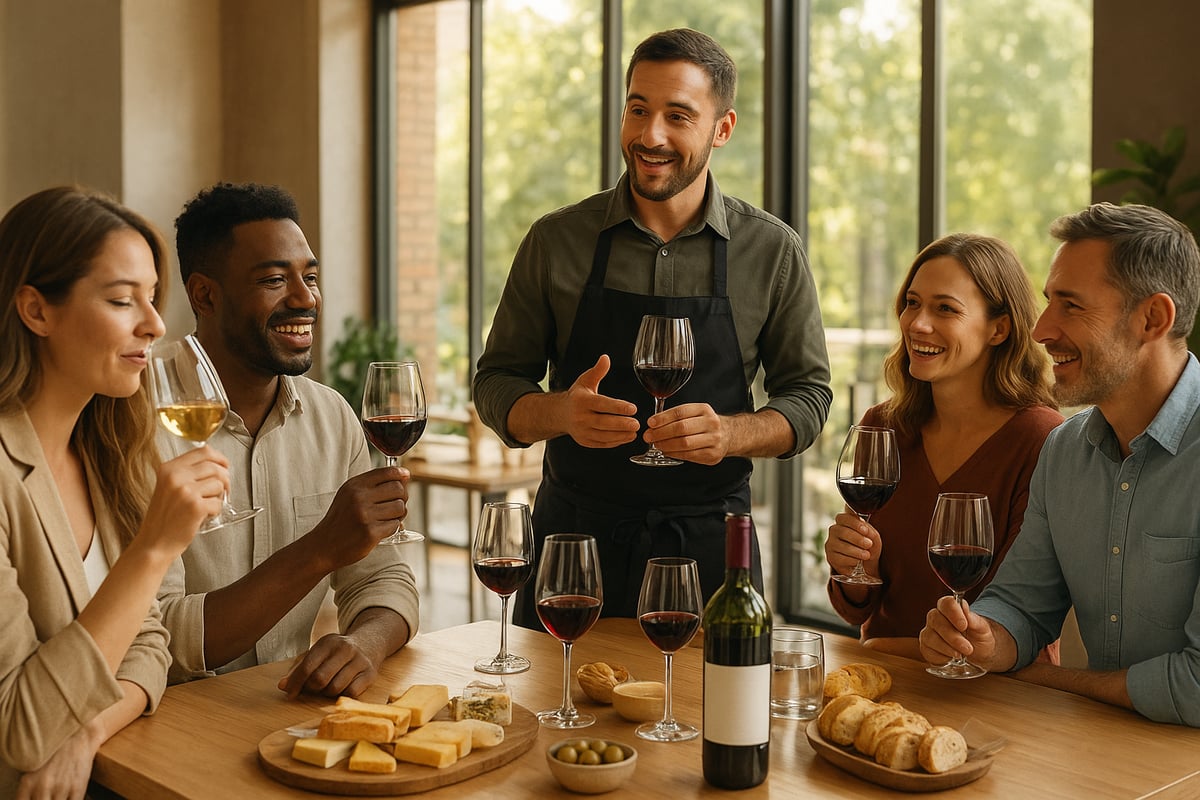
What Is a Wine Tasting?
A wine tasting is an event designed to introduce participants to a diverse range of wines in a relaxed, social setting. Unlike a wine masterclass, which focuses on structured learning, tastings are less formal and emphasize enjoyment and exploration. There are several types of wine tastings:
- Walk-around tastings, where guests circulate and sample at different stations
- Seated tastings, often guided by a host or sommelier
- Blind tastings, challenging participants to guess varietals or regions
- Themed tastings, focusing on a particular grape, region, or style
These events are led by wine experts or passionate hosts who share insights into each wine. Tastings attract a broad audience, from those new to wine to seasoned enthusiasts seeking new discoveries. Local wine shops, wineries, and tourism events frequently host these gatherings, making them highly accessible.
What to Expect in a Wine Tasting
At a typical wine tasting, guests are welcomed with an introduction to the event and a brief overview of the wines being poured. The experience often includes:
- Sampling multiple wines, usually between 4 and 8 varieties
- Engaging in discussions about aroma, flavor, and mouthfeel
- Comparing wines side by side to notice subtle differences
The atmosphere is generally relaxed and encourages social interaction. Many tastings pair wines with food, such as cheeses, charcuterie, or breads, to enhance the sensory experience and demonstrate classic pairings.
Tastings can range from casual drop-in events at local wine shops to elaborate themed evenings featuring classic European wines. For instance, Le Cordon Bleu offers an 8-wine tasting format that introduces participants to both Old World and New World styles. Benefits of wine tastings include:
- Accessibility for all experience levels
- Opportunity to try new wines without a large commitment
- A fun, social environment ideal for groups
Industry reports show 60% of wine tourists seek tasting experiences, underlining their popularity. If you are interested in a deeper dive into tasting formats and what you can expect, Wine tasting course insights offers valuable perspectives that complement the wine masterclass experience.
Pros and Cons of Tastings
Wine tastings offer several clear advantages:
- Affordability compared to a wine masterclass
- Flexibility and frequent availability
- Social interaction and group enjoyment
However, tastings also have some limitations. They usually provide less technical instruction and the depth of information can vary depending on the host. Tastings are ideal for newcomers, tourists, and those looking for a fun group activity. They may not be suitable for individuals seeking formal education or industry credentials.
To illustrate key differences, consider this comparison:
| Feature | Wine Tasting | Wine Masterclass |
|---|---|---|
| Structure | Informal, flexible | Structured, formal |
| Focus | Sensory enjoyment | Technical knowledge |
| Cost | Lower | Higher |
| Audience | All levels | Enthusiasts, pros |
Winery tasting rooms and event-based tastings offer a welcoming, low-pressure gateway into the world of wine. Data shows wine tourism and tasting events are on the rise, making these experiences even more accessible. While tastings may not provide the deep technical dive of a wine masterclass, they are often the first step in a lifelong journey of wine appreciation.
Classic Wine Styles: What You’ll Learn or Taste
Classic wine styles are the heart of any wine masterclass or tasting, offering a window into centuries of tradition and evolution. Whether you are seeking technical expertise or sensory delight, exploring these foundational wines shapes your appreciation and knowledge.
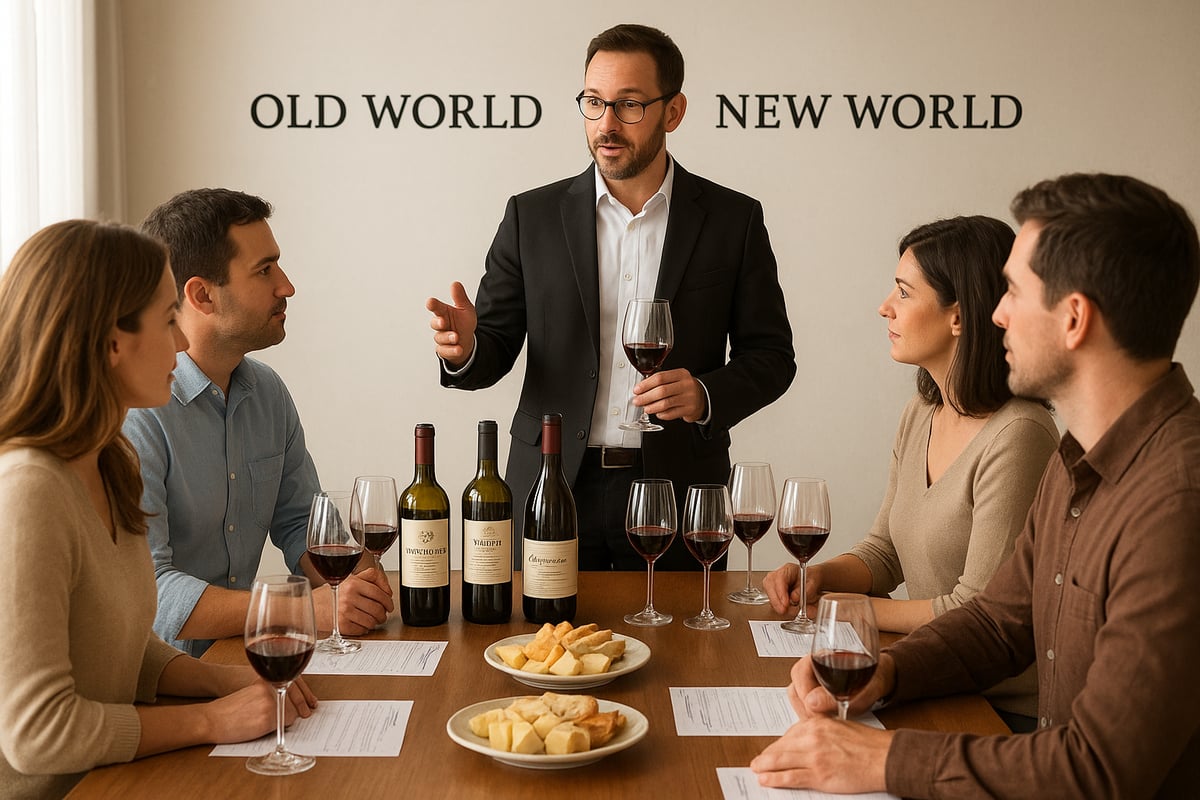
Old World vs New World Wines
One of the first distinctions you will encounter in a wine masterclass is the contrast between Old World and New World wines. Old World refers to historic European regions such as Bordeaux, Burgundy, and Tuscany, where tradition and terroir are deeply valued. New World encompasses areas like Napa Valley, Barossa, and Mendoza, celebrated for innovation and bold styles.
A typical wine masterclass will guide you through side by side tastings, often comparing the same grape variety, such as Chardonnay or Cabernet Sauvignon, from France and California. This approach illuminates differences in climate, soil, and winemaking philosophy. For example, tasting a Pinot Noir from Burgundy next to one from Oregon reveals how terroir shapes flavor and structure.
Old World wines account for over 60% of global production, maintaining a significant influence on wine education. You will often find that a wine masterclass dives into these contrasts with detailed discussion and structured tastings. For more on classic regions, see Wine in Tuscany and Italy.
Masterclasses use comparative formats to help you develop a nuanced palate, while tastings may offer themed flights that showcase these regional differences in a more relaxed setting.
Highlighting Iconic Styles
Both wine masterclass events and tastings introduce you to iconic styles that define the wine world. On the red side, Bordeaux blends, Chianti, Rioja, and Napa Cabernet are frequently featured, each with its unique blend of tradition and innovation. White wine classics include Burgundy Chardonnay, German Riesling, and New Zealand Sauvignon Blanc.
Sparkling and fortified wines, such as Champagne, Port, and Sherry, are also central to the curriculum. In a wine masterclass, you may experience vertical or horizontal tastings, examining how a single style evolves across vintages or producers. Historical context and technical information are typically provided to deepen understanding.
Tastings, on the other hand, often present flights of four whites and four reds from classic regions, focusing more on the enjoyment of discovery. These events are designed for accessibility and exposure, making them ideal for those beginning their wine journey.
Classic styles remain the backbone of wine education, featuring prominently in both formal courses and casual tastings. A wine masterclass provides a structured path to mastering these benchmarks, while tastings deliver a broad overview in a convivial environment.
The Role of Food Pairings
Food and wine are inseparable in the pursuit of true appreciation. In a wine masterclass, pairings are carefully curated to illustrate theory, such as why a Burgundy pairs with soft cheese or a Port with blue cheese. The technical rationale behind these matches is often discussed, enhancing your understanding of both wine and gastronomy.
Tastings usually offer local cheeses, meats, and bread to complement the wines, emphasizing the social and sensory experience. Whether you are attending a wine masterclass or a casual tasting, food pairings bring an extra dimension, showcasing the versatility and depth of classic wine styles.
This aspect of wine education helps bridge the gap between theory and practice, making every sip more meaningful.
Wine Masterclass Versus Tasting: Key Differences
Exploring the distinctions between a wine masterclass and a wine tasting can help you choose the experience that best aligns with your goals. Each format offers a unique approach to learning, socializing, and enjoying classic wine styles. Let us break down the key differences so you can make a confident choice.
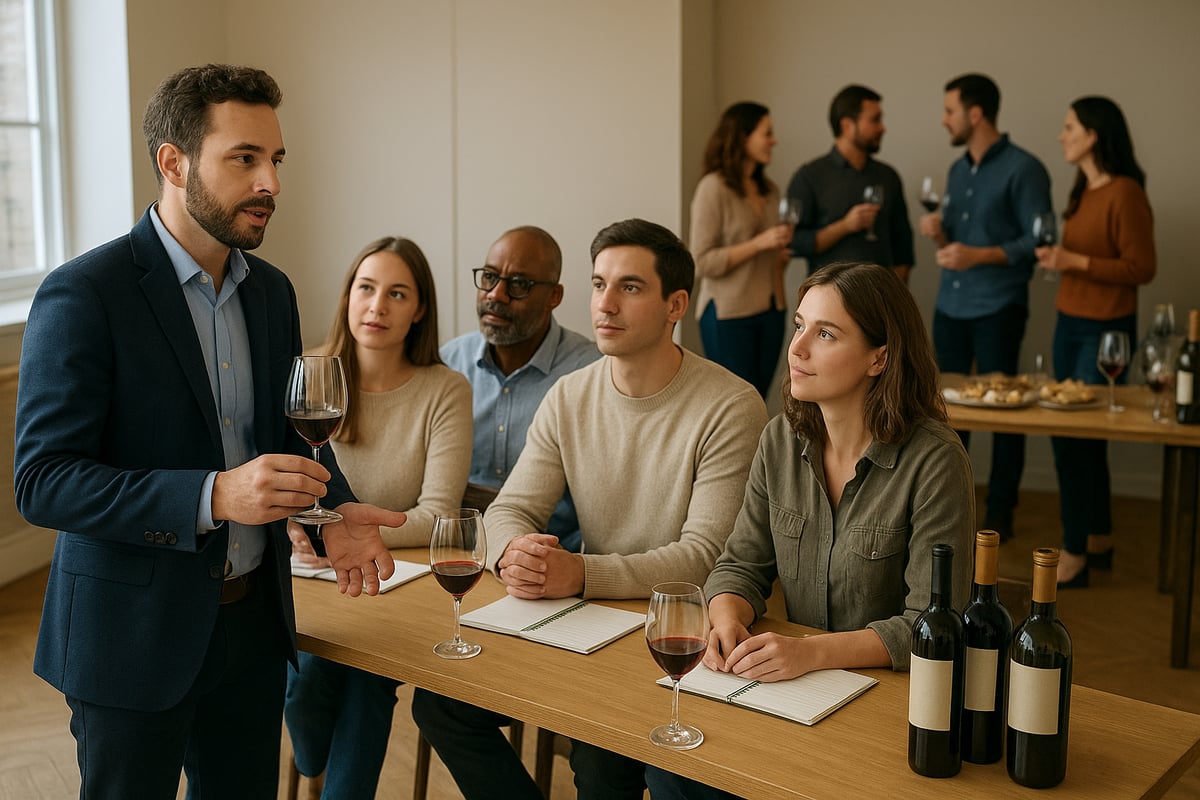
Learning Outcomes and Depth
A wine masterclass is designed for those seeking structured, in-depth knowledge. Participants delve into grape varieties, regional differences, and the technical vocabulary of wine. The curriculum often includes theory, guided tastings, and opportunities to earn certifications such as WSET or sommelier credentials.
In contrast, wine tastings focus on direct, sensory enjoyment. Attendees sample a range of wines, compare aromas and flavors, and discuss impressions in a relaxed setting. While tastings offer valuable exposure to classic styles, they rarely provide the technical depth or systematic progression of a wine masterclass.
The following table summarizes these differences:
| Aspect | Wine Masterclass | Wine Tasting |
|---|---|---|
| Depth of Learning | High (theory, technique, analysis) | Moderate (sensory, discovery) |
| Structure | Formal, curriculum-based | Informal, flexible |
| Certification | Often available | Rare |
Studies show that 80% of wine masterclass attendees report increased confidence in their wine knowledge. If you are seeking to master classic styles, a wine masterclass provides the structure and expertise to achieve that goal.
Setting, Atmosphere, and Social Experience
The setting of a wine masterclass is typically academic. Small groups gather in classrooms or seminar rooms, fostering focused learning and networking with fellow enthusiasts. The atmosphere is attentive, with participants engaging in discussions led by an expert.
Wine tastings, on the other hand, take place in more casual environments. Wineries, shops, restaurants, and event spaces create a vibrant, social scene. Larger groups mingle, sample wines, and enjoy spontaneous conversations. The experience is interactive, but the emphasis is on enjoyment rather than instruction.
Consider these contrasts:
- Wine masterclass: Intimate, focused, often with peer networking.
- Wine tasting: Social, lively, ideal for meeting new people.
- Example: Le Cordon Bleu’s masterclass vs. local walk-around tastings.
Atmosphere can shape your experience. If you thrive on structured dialogue and technical detail, a wine masterclass may suit you. For those who prefer a festive ambiance, wine tastings offer a welcoming gateway.
Cost, Accessibility, and Commitment
Investing in a wine masterclass often means a higher price and a greater time commitment. Fees can reach £90 or more, and sessions require advance booking. These events are scheduled, making them ideal for learners who value commitment and planning.
Wine tastings are typically more accessible and affordable, with many events priced between £20 and £40. Their frequency and drop-in formats make them attractive to tourists, locals, and casual learners alike. For those unable to attend in person, at-home options are growing in popularity; you can find practical advice in this Wine tasting at home tips guide.
Summary of practical considerations:
- Wine masterclass: Higher cost, scheduled, best for dedicated learners.
- Wine tasting: Lower cost, flexible, great for spontaneous enjoyment.
- Accessibility: Tastings are widely available, masterclasses may be limited to major cities.
Weigh your investment against your goals. Whether you choose a wine masterclass or a tasting, aligning the experience with your needs ensures a rewarding journey.
Choosing the Right Experience for You
Choosing between a wine masterclass and a tasting can feel daunting, especially with so many options available in 2025. The right path depends on your personal goals, preferred learning environment, and practical realities. Use the questions below to guide your decision and make the most of your wine journey.
Assessing Your Wine Goals
Start by clarifying your main objectives. Are you seeking structured education, a formal credential, or simply enjoyment? If your ambition is to gain in-depth knowledge or pursue a qualification, a wine masterclass will provide the rigorous curriculum you need. Classic styles are often central to these courses, ensuring you build a solid foundation.
For those who prefer a broader exploration or a more relaxed approach, tastings offer a chance to enjoy wine without the pressure of exams or detailed study. Consider whether you are an aspiring sommelier, an enthusiastic collector, or just looking to expand your palate. Aligning your choice with your personal objectives is the first step to a rewarding experience.
Matching Personality and Learning Style
Reflect on the environment where you learn best. Do you thrive in an academic setting, engaging with theory and guided instruction? A wine masterclass is ideal for detail-oriented learners who appreciate expert feedback and hands-on practice.
On the other hand, if you enjoy lively discussions and peer-to-peer learning, tastings might be your preferred format. Extroverts often find group tastings energizing, while those who value structure and depth gravitate toward masterclasses. Think about whether you prefer guided lessons or informal discovery, as this will shape your overall satisfaction.
Practical Considerations: Time, Budget, and Location
Logistics play a major role in your decision. Wine masterclass sessions typically require a higher investment of both time and money, with scheduled dates and limited spots. Tastings are generally more accessible, with a range of price points and more frequent, drop-in options.
Availability in your local area matters, especially if you're planning a wine-focused trip. According to the Global Wine Tourism Report 2025, 70% of wine learners choose experiences based on convenience and accessibility. Weigh your budget, schedule, and location to ensure your choice fits seamlessly into your lifestyle.
Making the Most of Both Worlds
For many, combining both experiences delivers the greatest rewards. Start with tastings to explore a variety of wines and build confidence, then progress to a wine masterclass for deeper understanding and skill development. This blended approach maximizes both enjoyment and technical knowledge.
Leverage online and in-person options to expand your horizons. Many wine education providers now offer hybrid programs that cater to different needs and learning preferences. According to Wine Business Education Trends, a mix of formats is becoming the norm in wine education. By thoughtfully combining tastings and masterclasses, you can create a journey that is both enriching and flexible.
Trends in Wine Education and Tasting for 2025
The landscape of wine education is evolving rapidly as we move into 2025. Both the wine masterclass format and traditional tastings are adapting to new technologies, sustainability values, and a more globalized palate. Understanding these trends helps you navigate the best options for your wine education journey.
Innovations in Wine Learning
The wine masterclass experience is being transformed by technology. Hybrid and online masterclasses now allow participants to join from anywhere, with tasting kits shipped directly to their homes. Interactive apps and virtual tastings have made education more accessible, especially for those outside major wine regions.
Since 2020, digital wine masterclass enrollments have increased by 30 percent, reflecting a shift in how enthusiasts and professionals learn. These innovations offer flexibility and a broader reach, enabling more people to explore classic styles with expert guidance. For those interested in the broader industry context, the State of the U.S. Wine Industry 2025 provides insight into how consumer behavior is shaping these educational trends.
Sustainability and Classic Styles
Sustainability is now a core focus in both wine masterclass programs and tastings. Courses increasingly highlight organic, biodynamic, and environmentally responsible producers. Many masterclasses incorporate tastings of classic wine styles made with eco-friendly practices, reflecting the industry's shift toward sustainability.
Notably, 25 percent of new wine masterclass curricula now include sustainability modules. This evolution means that learning about classic wines also involves understanding the environmental impact and ethical considerations behind each bottle. As a result, students gain a holistic appreciation for tradition and innovation in the wine world.
Globalization and Regional Diversity
Wine masterclass offerings have expanded beyond European classics. Today, they explore iconic wines from South America, South Africa, and Asia, fostering a more inclusive and diverse education. Comparative tastings between Old World and New World wines are now standard, helping students grasp global nuances.
With New World wines steadily gaining market share, this trend empowers learners to appreciate both established and emerging styles. By experiencing a wide range of terroirs and grape varieties, wine masterclass participants develop a richer, more nuanced palate aligned with global trends.
The Social Side: Community and Experience
Wine education is becoming more community oriented, with growth in clubs, group tastings, and themed events. The wine masterclass is now often paired with networking opportunities, allowing enthusiasts to connect and share discoveries. Tastings serve as social anchors that build lasting relationships within the wine community.
According to industry reports, 40 percent of wine learners join clubs or social groups to deepen their involvement. This focus on experience and connection means that participating in a wine masterclass or tasting is as much about community as it is about education. For more on the economic and social impact of these experiences, see the Economic Impact of U.S. Wine Industry, which details the role of wine in fostering local and national engagement.
As you reflect on the differences between immersive masterclasses and lively tastings, one thing becomes clear—there’s no better way to truly explore classic wine styles than by experiencing them firsthand. If you’re ready to put what you’ve learned into practice and taste the renowned Nobile di Montepulciano DOCG wines for yourself, we invite you to savor the beauty and hospitality of our 17th century estate in Montepulciano. Let us guide you on a journey through Tuscany’s iconic flavors, surrounded by the charm of Tenuta Golo.
Book Your Wine Tasting Now


